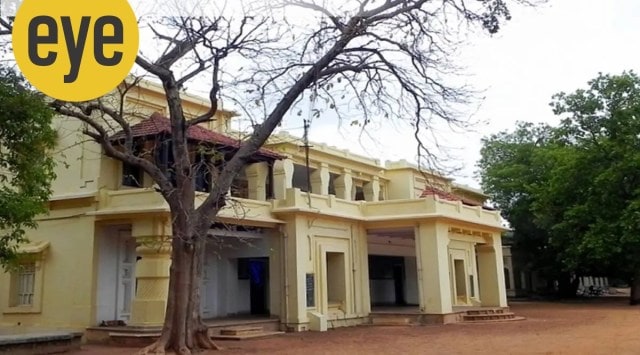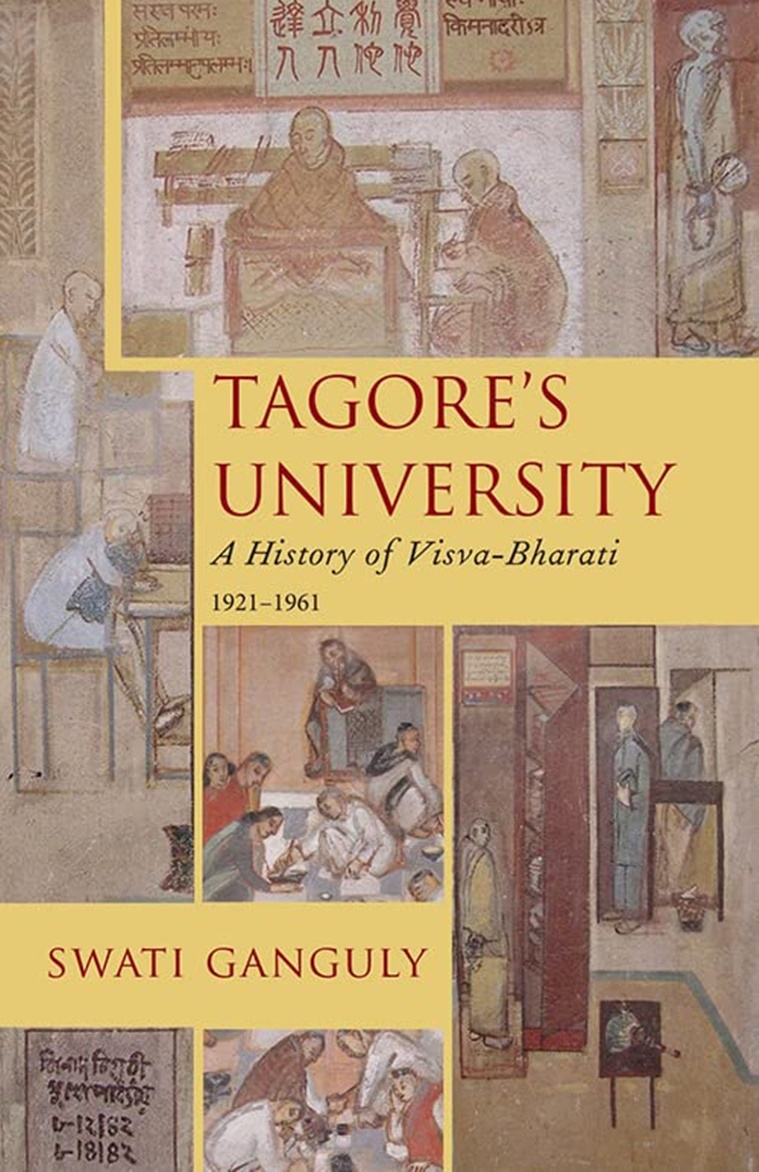- India
- International
Swati Ganguly’s Tagore’s University: A History of Visva-Bharati (1921-1961) looks back at the institute’s century-old legacy
The book examines how Visva-Bharati built a community of scholarship before a radical shift in its functioning in the last few years, writes Angshuman Kar
 Visva Bharati University (File)
Visva Bharati University (File)Tagore’s University: A History of Visva-Bharati, the result of painstaking research by Swati Ganguly, has just come out as the institute completes its centenary celebration. The book maps the history of Visva-Bharati from its inception to Tagore’s birth centenary year to document how the University, over the years, built up a cultural community of learning, teaching and scholarship. Ganguly has scripted this history using archives, memoirs, official documents and oral narratives.
The book is written with the objectives of correcting some misconceptions about the Visva-Bharati and to resist attempts of appropriating it for parochial purposes. In the Introduction to the book, Ganguly writes, “Indian history shows many instances of nationalist strivings to appropriate Rabindranath, but the larger truth remains that Visva-Bharati was founded against the nationalist currents that swept India during the Gandhian non-cooperation movement.”
Buy Now | Our best subscription plan now has a special price
Misconceptions about the nationalist character of Visva-Bharati partly owes to misreadings of Tagore’s lecture “The Centre of Indian Culture” (1919, later published as a small monograph) in which he, disapproving a blind imitation of a full-grown European University while setting up an Indian one, said, “The mischief is that as soon as the idea of a University enters our mind, the idea of a Cambridge University, and a host of other European Universities, rushes in at the same time and fills the whole space.” Tagore, in that lecture, was objecting to “the artificial arrangement” by which “foreign education tends to occupy all the space of our national mind.” But he specifically mentioned, “Let me state clearly that I have no distrust of any culture because of its foreign character. On the contrary, I believe that the stock of such forces is necessary for the vitality of our intellectual nature.”
Ganguly, thus, is right in arguing that Visva-Bharati was conceived of by rejecting xenophobic and insular nationalism; it was truly cosmopolitan in its character and believed in non-hierarchical exchange of knowledge between the East and the West. This, she points out, is best revealed in the motto of Visva-Bharati — “Yatra visvam bhabhavatye-kanidam”, which means “where the world makes its home in a nest.”

Another fallacy that Ganguly tries to correct is the belief that Visva-Bharati was an ideological extension of the Ashram School founded by Tagore in 1901. Supporting historian Sabyasachi Bhattacharya’s argument that Tagore’s educational thoughts did not have an “undifferentiated continuity” and developed through four different stages, Ganguly places Visva-Bharati in the third phase of this schema. She argues that while the Ashram School was founded as a part of Tagore’s attempt to build a ‘Swadeshi Samaj,’ Visva-Bharati, from the beginning, had a cosmopolitan character. Tagore invited scholar from across the world to highlight the cosmopolitan character of the institute. Ganguly puts emphasis on the contribution of both European and Asian scholars such as Sylvain Lévi, Giussepe Tuci, CF Andrews, William Pearson, Vidhusekhar Sastri, Kshitimohan Sen, Hazariprasad Dwivedi, Nandalal Bose, Rathindranath Tagore and Prasanta Chandra Mahalanobis, whom she calls Tagore’s “collaborators”, in the making of Visva-Bharati.
One important feature of the book is the way it addresses Jadunath Sarkar’s critique of Tagore’s vision of a University by putting it in the context of recent debates on higher education in India. On May 31, 1922, Sarkar wrote a letter to Tagore stating that Visva-Bharati would fail to produce quality research as it had not considered “exact knowledge” and “intellectual discipline” as the basic requirements for good research. Initially, at least, Tagore’s idea of Visva-Bharati was that of a research university (based on a professorial rather than tutorial system) that would not offer undergraduate and postgraduate degrees. Sarkar, in his letter, argued for the need for an interdisciplinary approach and an academic grinding in research. His main objection was, of course, the absence of an undergraduate college in Visva-Bharati. Despite Tagore’s unhappiness, the college, known as Siksha Bhavana, started growing after the Samsad on July 21, 1925 resolved to allow the students of Visva-Bharati having Madhya and Upadhi certificates to sit for the IA and BA examinations of the University of Calcutta.
 Tagore’s University: A History of Visva-Bharati (1921-1961); Swati Ganguly; Permanent Black; 508 pages; Rs 1200 (Photo: Amazon.in)
Tagore’s University: A History of Visva-Bharati (1921-1961); Swati Ganguly; Permanent Black; 508 pages; Rs 1200 (Photo: Amazon.in)
It would be wrong, however, to think that the book is more a theoretical enquiry into Tagore’s idea of an ideal University than a history of Visva-Bharati. Ganguly chronologically narrates how Visva-Bharati Quarterly, University Press and Publication Unit, Visva-Bharati Society, different bhavanas (such as Cheena bhavana, and Hindi Bhabana) came into being. A full chapter has been devoted to describe the birth of Sriniketan, aptly highlighting the role of Leonard Elmhirst in establishing the Department of Agriculture there.
Ganguly also documents Tagore’s disenchantment with his “life’s best treasure” towards the end of his life and how, after Tagore’s demise, Visva-Bharati survived through an acute financial crisis until the Visva Bharati Bill was passed in the Parliament in 1951. The societal connection that Tagore thought to be an essential requirement for a university is also highlighted by Ganguly by foregrounding how, despite acute financial crisis, Visva-Bharati continued the relief work during the (in)famous Bengal famine. The book has also critically appreciated the roles of Rathindranath Tagore, Satyendranath Bose and Sudhi Ranjan Das as vice-chancellors of Visva-Bharati. Special mention should be made of a few rare photographs that the book contains and also the way Ganguly remembers Surendranath Kar (whom she calls “the forgotten architect”) — the man whose vision and skill created many of the spectacular houses of Santiniketan.
Ganguly ends the book by mourning over the radical change of Visva-Bharati in the past few years. One of the anecdotes that she shares could be briefly narrated in the context of this lamentation. Writer Syed Mujtaba Ali completed his studies from Visva-Bharati when it could not offer formal degrees. He got an official job and was posted in Kabul. When the authorities suddenly discovered his expertise in German, his salary was hiked. Ali’s colleagues protested against it on the ground that, unlike them, Ali did not have a formal degree from a university but only a diploma from an ‘unrecognised’ institution. The then education minister pacified the agitators by pointing out that the diploma in question had been signed by none other than Rabindranath Tagore. The same is true about Visva-Bharati of the present. It might be a shadow of the past but it still carries Tagore’s name as its most valuable talisman.
Angshuman Kar is a Bengali poet and professor of English literature at Burdwan University
Apr 26: Latest News
- 01
- 02
- 03
- 04
- 05








































